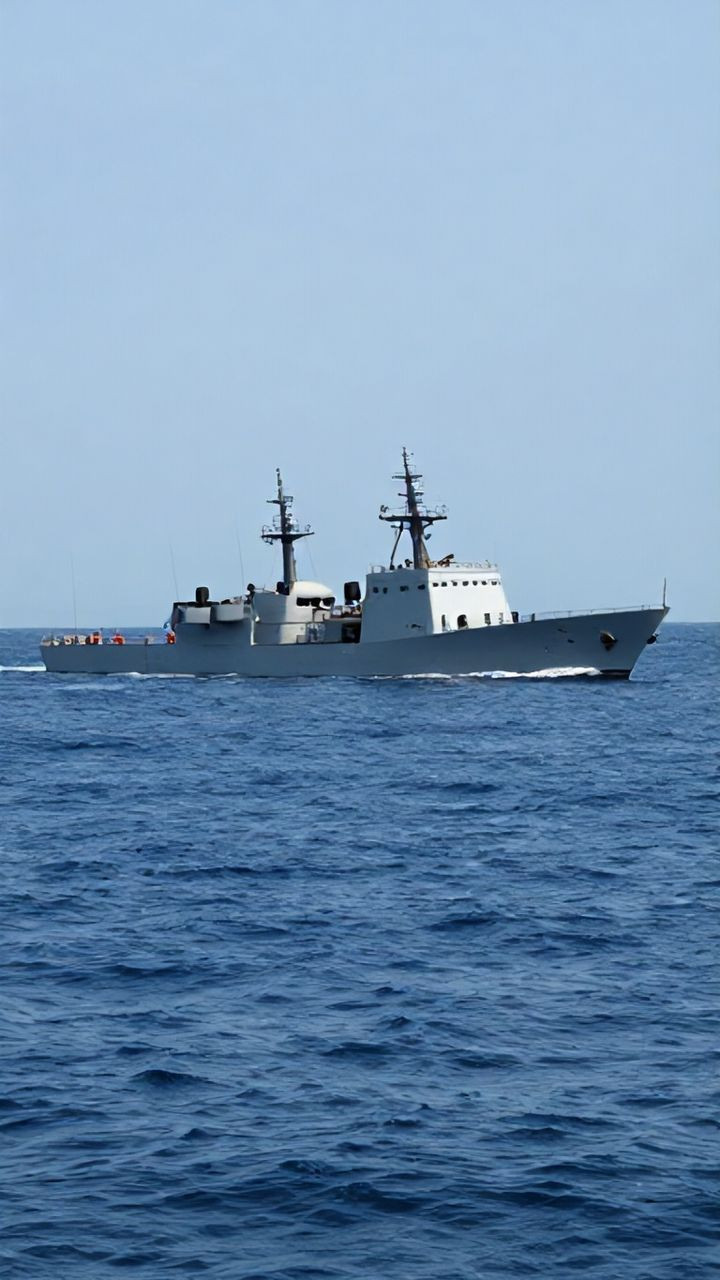
Greek authorities are taking measures after multiple earthquakes rattled Santorini, a volcanic island in Greece. About 200 quakes with magnitudes between 3 and 4.9 were registered from Saturday to Monday afternoon between Santorini and the nearby island of Amorgos, according to authorities. The fault line producing the current earthquakes runs for about 120 kilometers (75 miles), but only the southern part between Santorini and Amorgos has been activated. So far, there has been no damage or injuries reported. Seismologist Gerasimos Papadopoulos said on Greece's ERT television that the seismic activity began on Jan. 24, but intensified Saturday, with increasing frequency and magnitudes. The earthquakes have epicenters beneath the seabed, roughly 30-40 kilometers (18-25 miles) from any of the islands. Scientists say this is good news, as an epicenter beneath land could potentially be more destructive. But a large quake could also trigger a tsunami, so authorities have warned people to stay away from coastal areas and head inland if they feel a significant earthquake. Santorini, one of Greece's most popular tourist destinations, took its present crescent shape following a massive volcanic eruption in antiquity. Now, millions of visitors each year come to see its dramatic scenery of whitewashed houses and blue-domed churches clinging to the cliff along the flooded caldera, or volcanic crater. Last week, scientists said they had noticed increased volcanic activity in the caldera, but say this isn't linked to the earthquakes. Santorini lies along the Hellenic Volcanic Arc, which stretches from the Peloponnese in southern Greece through the Cycladic islands. Another volcano — a submarine one called Kolumbo — lies about 8 kilometers (5 miles) northeast of Santorini, nearer to the epicenter of the current earthquakes. But seismologists say the quakes aren't related to the volcanoes. "What we must realize is that the Santorini volcano produces very large explosions every 20,000 years," Efthymios Lekkas, seismologist and head of the scientific monitoring committee for the Hellenic Volcanic Arc, said last week. "It's been 3,000 years since the last explosion, so we have a very long time ahead of us before we face a big explosion." The fault line that has been activated was the site of Greece's largest quake in the last century a 7.7 magnitude temblor dubbed the Amorgos earthquake that struck in 1956, triggering a roughly 20-meter (65-foot) tsunami, causing significant damage in Amorgos and Santorini and killing more than 50 people. Santorini is also the site of one of the largest volcanic eruptions in human history. Known as the Minoan eruption, it occurred around 1,600 B.C. and destroyed much of the formerly round island, giving Santorini its current shape. The eruption is believed to have contributed to the decline of the ancient Minoan civilization. Although it's still an active volcano, the last notable eruption occurred in 1950.
Greek authorities are taking measures after multiple earthquakes rattled Santorini, a volcanic island in Greece. About 200 quakes with magnitudes between 3 and 4.9 were registered from Saturday to Monday afternoon between Santorini and the nearby island of Amorgos, according to authorities. The fault line producing the current earthquakes runs for about 120 kilometers (75 miles), but only the southern part between Santorini and Amorgos has been activated. So far, there has been no damage or injuries reported. Seismologist Gerasimos Papadopoulos said on Greece's ERT television that the seismic activity began on Jan. 24, but intensified Saturday, with increasing frequency and magnitudes. The earthquakes have epicenters beneath the seabed, roughly 30-40 kilometers (18-25 miles) from any of the islands. Scientists say this is good news, as an epicenter beneath land could potentially be more destructive. But a large quake could also trigger a tsunami, so authorities have warned people to stay away from coastal areas and head inland if they feel a significant earthquake. Santorini, one of Greece's most popular tourist destinations, took its present crescent shape following a massive volcanic eruption in antiquity. Now, millions of visitors each year come to see its dramatic scenery of whitewashed houses and blue-domed churches clinging to the cliff along the flooded caldera, or volcanic crater. Last week, scientists said they had noticed increased volcanic activity in the caldera, but say this isn't linked to the earthquakes. Santorini lies along the Hellenic Volcanic Arc, which stretches from the Peloponnese in southern Greece through the Cycladic islands. Another volcano — a submarine one called Kolumbo — lies about 8 kilometers (5 miles) northeast of Santorini, nearer to the epicenter of the current earthquakes. But seismologists say the quakes aren't related to the volcanoes. "What we must realize is that the Santorini volcano produces very large explosions every 20,000 years," Efthymios Lekkas, seismologist and head of the scientific monitoring committee for the Hellenic Volcanic Arc, said last week. "It's been 3,000 years since the last explosion, so we have a very long time ahead of us before we face a big explosion." The fault line that has been activated was the site of Greece's largest quake in the last century a 7.7 magnitude temblor dubbed the Amorgos earthquake that struck in 1956, triggering a roughly 20-meter (65-foot) tsunami, causing significant damage in Amorgos and Santorini and killing more than 50 people. Santorini is also the site of one of the largest volcanic eruptions in human history. Known as the Minoan eruption, it occurred around 1,600 B.C. and destroyed much of the formerly round island, giving Santorini its current shape. The eruption is believed to have contributed to the decline of the ancient Minoan civilization. Although it's still an active volcano, the last notable eruption occurred in 1950.
Greek authorities are taking measures after multiple earthquakes rattled Santorini, a volcanic island in Greece. About 200 quakes with magnitudes between 3 and 4.9 were registered from Saturday to Monday afternoon between Santorini and the nearby island of Amorgos, according to authorities. The fault line producing the current earthquakes runs for about 120 kilometers (75 miles), but only the southern part between Santorini and Amorgos has been activated. So far, there has been no damage or injuries reported.
Seismologist Gerasimos Papadopoulos said on Greece's ERT television that the seismic activity began on Jan. 24, but intensified Saturday, with increasing frequency and magnitudes. The earthquakes have epicenters beneath the seabed, roughly 30-40 kilometers (18-25 miles) from any of the islands. Scientists say this is good news, as an epicenter beneath land could potentially be more destructive. But a large quake could also trigger a tsunami, so authorities have warned people to stay away from coastal areas and head inland if they feel a significant earthquake.
Santorini, one of Greece's most popular tourist destinations, took its present crescent shape following a massive volcanic eruption in antiquity. Now, millions of visitors each year come to see its dramatic scenery of whitewashed houses and blue-domed churches clinging to the cliff along the flooded caldera, or volcanic crater.
Last week, scientists said they had noticed increased volcanic activity in the caldera, but say this isn't linked to the earthquakes. Santorini lies along the Hellenic Volcanic Arc, which stretches from the Peloponnese in southern Greece through the Cycladic islands. Another volcano — a submarine one called Kolumbo — lies about 8 kilometers (5 miles) northeast of Santorini, nearer to the epicenter of the current earthquakes.
But seismologists say the quakes aren't related to the volcanoes. What we must realize is that the Santorini volcano produces very large explosions every 20,000 years, Efthymios Lekkas, seismologist and head of the scientific monitoring committee for the Hellenic Volcanic Arc, said last week. It's been 3,000 years since the last explosion, so we have a very long time ahead of us before we face a big explosion.
The fault line that has been activated was the site of Greece's largest quake in the last century a 7.7 magnitude temblor dubbed the Amorgos earthquake that struck in 1956, triggering a roughly 20-meter (65-foot) tsunami, causing significant damage in Amorgos and Santorini and killing more than 50 people.
Santorini is also the site of one of the largest volcanic eruptions in human history. Known as the Minoan eruption, it occurred around 1,600 B.C. and destroyed much of the formerly round island, giving Santorini its current shape. The eruption is believed to have contributed to the decline of the ancient Minoan civilization.
Although it's still an active volcano, the last notable eruption occurred in 1950.




